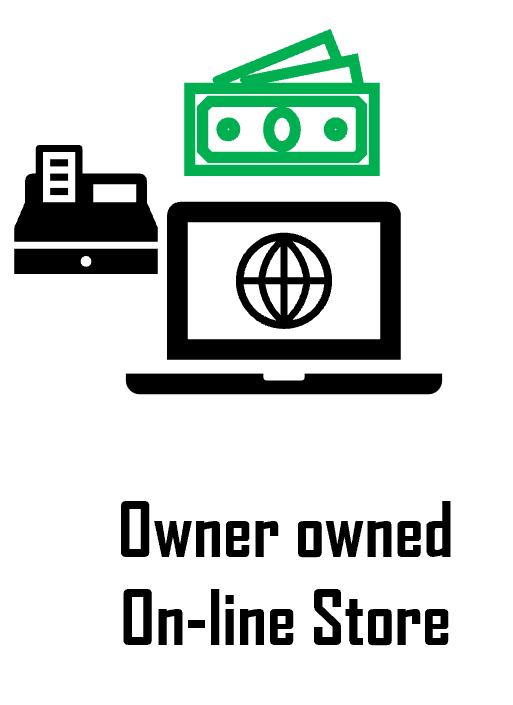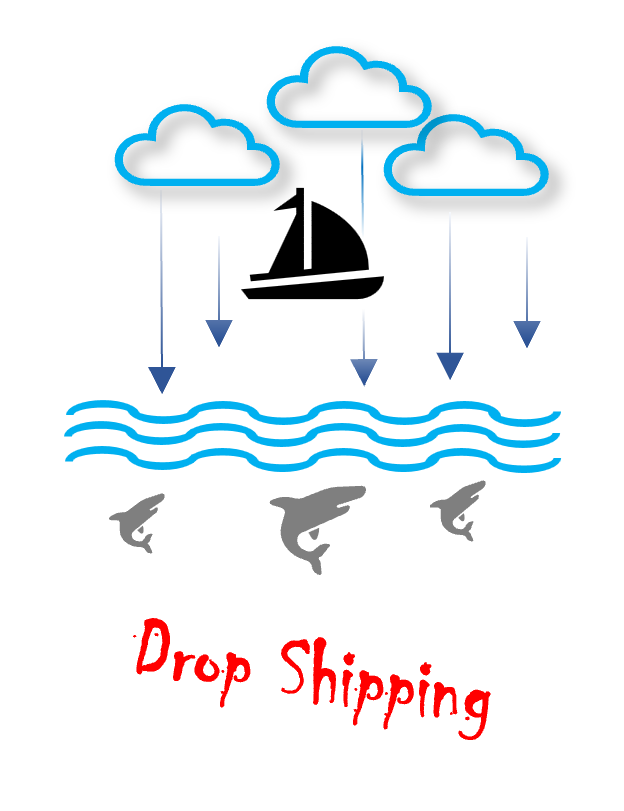Opening An Amazon Affiliate / Associate Store

The romantic notion of owning and running your own business, is often just that, a dream and if it is reality … it is quite often a nightmare.
The idea is fantastic, you gain your independence, have the flexibility of making your own hours, make your own rules, express your passion and creativity, create something of value and generate wealth in the process.
Of course, it’s never that easy, you have to worry about cashflow, legal compliance, employee relations and the added responsibility of having employees. The increased risk of burnout is ever present.
We digress, this isn’t an article on owning a business. We won’t be exploring the potential of automating a service business such as hairdressing … using the propellers of drones to cut hair (“haircuts by air” or “Aircuts”) or the potential of rampant AI to end the existence of many professions.
This is an article on a specific type of business namely the sale of physical goods.
To save time we’ll even provide the conclusion upfront and then drill down into a bit more detail for those that are interested.
Conclusion
Open an Amazon Associate Store. It is open 24/7, works while you’re not there, you don’t have to purchase inventory or get the product to the end customer and gain instant global reach.
A link to our unique take on an Associate Store can be found on: https://root4plant.com/store-root4plant/, as an Amazon Associate, Root4Plant earns Commission Income from qualifying purchases.
Great but what can I learn from this article, how does it help me and why should I consider … well we need the “How” and the “Why”.
How and why did we arrive at this conclusion?
Well, we have always wanted to be in business and sell something, we discussed, on a high level the different forms of store formats used to sell goods. The “How”, its risks and required resources have always been of concern, we’ve set out a few of the Pros and Cons of the main store formats in the funky Excel table below … watch out for the sad faces and those sharks and then continue reading … as we think we’ve found the “How” … the end result … you don’t have to sell anything to sell something?!
Pros and Cons of the main Store Formats


Traditional Brick & Mortar Store,
The good old traditional store, interacting with your customers and building a presence in the local community.
For those that enjoy interacting with the customer and for those customers that want to see what they’re buying, it’s a great setup.
You take on the full risk of the business and as a result you also have the upside of retaining all the profits.
One of the biggest drawbacks of the traditional store is lack of geographical reach and scale. To expand into new areas, entails opening new stores, incurring the high upfront costs and having to expand the labour force.
If you expand into new areas there is a risk of losing out on what made the original store successful … the owner, the location, the experience … to avoid diluting the original experience will cost money and discipline to keep the experience across the stores consistent.
Of all the store formats, this is the most resource intensive, cost and time wise. You need to employ people across all functions in a business. With an On-Line store you can save on retail space and storage costs by using warehousing space instead of the more expensive Retail real estate. You’d need fewer people required for inventory control, checkout points, fewer people result in lower operating costs.
This format does remain an excellent way to build a brand and a customer experience, if you’re selling goods.

Owner owned On-line Store,
The new “traditional store”, interacting with your customers digitally and building an on-line presence without geographical restrictions.
The big advantage of an On-line store is that you aren’t limited to 1 geographical location, your potential market is global.
As you don’t need to have a physical presence to sell your products, you can avoid the costs associated with purchasing or renting retail space. You also reduce your storage costs as you can move your products into a warehouse and ship from there. Your labour costs should be far lower as you don’t need to pack the shelves, have multiple checkout points or have additional security to monitor those “customers” that don’t intend to pay or to safeguard the paying customers.
One of the big lookouts for this format of store are transport costs, the logistical costs can be a killer and can increase exponentially. Your storage costs are lower and you can reduce your inward shipping costs by only needing one delivery to your warehouse instead of to multiple retail stores.
However, your outgoing shipping costs become a massive factor, in a retail store, the end customer more often than not buys the product and takes it with them. With an on-line store, you must get the product to the end customer and handle the admin and costs if there is a return. These costs are an even bigger factor if you’re selling low value items as they can wipe out your full profit margin or even worse, you could be selling at a loss.
The complexity and cost of this model versus a traditional physical store does become the cost of getting the product to the end customer. A well run and successful On-line store should be more profitable than the equivalent Physical store, the overall costs are lower and the potential scale and opportunity are exponentially greater.

Owner owned On-line Store & Brick and Mortar Store,
The new “Hybrid” business model, combining the best of both worlds, the old and the new working hand in hand.
This model offers several advantages, you get the limitless opportunities of a global marketplace, your geographical risk is reduced as your business isn’t limited to 1 or 2 sites.
There is a great synergy between these 2 models, you can use your retail space to interact with customers, reduce the cost of returns as you can address issues face to face and grow a brand face to face.
Your overall /nett storage costs should be lower than a traditional store, you can reduce the required retail space by keeping more product at a warehouse and takeover part of the inbound transport costs by supplying your retail stores out of your warehouse. Your inventory holding costs should also be reduced as you won’t have to keep large quantities of safety stock on hand at the retail stores.
There is also the potential to reduce your On-line shipping costs by offering customers the option of collecting the goods that they order on-line at your retail location. They can avoid the queues, you have fewer till points and can pack their order centrally.

On-line Market Place,
The “New New” model, this is a hybrid model of the On-line Store and where Amazon, Ali Express, Takealot and the like come into the picture.
You “outsource your business” to the experts, those that specialise in warehousing and distribution, overnight you increase your reach and scale exponentially. Your customer is most probably already buying on one of these sites and it’s far more convenient for them to add 1 or 2 of your products to their “shopping cart”.
You can “warehouse” your products at the On-line market place, you avoid the costs of setting up and running an on-line store. They handle the outbound shipping, customer returns and the collection of the payment from the end customer … far cheaper than you ever could.
The model works based on sheer size and economies of scale and you can either focus on building a brand or focus on selling volume.
Of course this convenience and potential market comes at a cost, low value items need to be carefully considered as the cost per transaction can be high. The competition is fierce and if you’re doing well with a certain product, particularly if it is not a unique product and more of a commodity, your competitors will step in and your margins will be eroded very quickly.
The scale of these market places means that they call the shots and any room for negotiation is limited. They own the space and they will aim to maximise their margins, which may eat into yours.

Drop Shipping,
We’re potentially entering murky waters here, on the surface this sounds fantastic. You don’t have to invest in inventory, the wholesaler handles the admin of the orders and the shipping … and you pocket a decent profit.
In theory Drop Shipping works as follows:
You, the Drop Shipper have an on-line store, but you don’t have the funds to purchase the stock upfront and quite frankly if you don’t have to purchase the stock upfront why would you. Here’s where Drop Shipping comes in, you enter into an agreement with a wholesaler or owner of a product. You’ll advertise and sell their products on your website …. and they will handle the shipping and order fulfilment.
Fantastic the wholesaler saves on variety of costs, sales and marketing, cash or debtors collection and you “get a share” in this saving … in theory.
When the sale takes place on your site, you’ll take payment from the customer and at the same time place an order with the wholesaler. The wholesaler will bill you for the stock at this point and from there make the delivery to the end customer. Everyone is happy …. right?
But now … what happens if the delivery to the customer doesn’t take place, what if the supplier takes 6 weeks to deliver , what if the customer wants to return the goods, what if the goods are damaged, what if the payment was fraudulent and gets reversed?
Well quite simply you as the Drop Shipper have been “dropped in it”, you’ve made the sale to the end customer, not the supplier of the product. Any bad press or reputational damage is yours and so is the financial loss.
Are we saying that you should completely avoid Drop Shipping … no we’re not, with the correct (reliable) suppliers, the correct systems and agreements in place … you could make money.
What we’re saying is be extremely cautious, do your research and before doing anything, understand the end to end process and don’t go all in … you’re selling something that you don’t have on hand. If you decide to proceed, limit your risk as far as possible … work out a worst case scenario if you can afford to lose 100% of 5 sales … then only start with 5 sales … in theory you’re losing the value of what you paid the supplier of the product. Once you need to build up infrastructure to handle customer returns, failed payments … the potential costs can grow exponentially.
You’ve heard the term “buyer beware” … this is “seller beware”.

Amazon Associate Store,
Where Affiliate Marketing meets … running your “own store”.
Now here’s an option that allows you to “open” your own store, with no inventory, no admin, no collection or infrastructure costs and not having to worry about getting the goods to the end customer. It is low risk and the most passive of the different store formats, as a result this option offers the least potential upside.
The risk averse are given the chance to “sell physical goods”, maybe they’ve always wanted to run a store but didn’t know where to start or they didn’t have the resources, time or skillset to open a store.
Overnight they’re able to “sell products globally”, “their customers” can go to their favourite shopping platform at their convenience and read 1,000’s of customer reviews based on real world experience, search for the best price and get the product delivered. As the actual sale is with a global marketplace, the customer has the confidence of knowing that if there’s an issue, they can return the goods (Terms and Conditions allowing) and the marketplace should be more secure than a smaller on-line store.
The actual seller isn’t the Amazon Associate, it remains Amazon and the company that owns the product. The Amazon Associate gets a marketing fee / commission on the sale … have you opened your “own store” of course not, however it is nice to dream that you’ve indirectly become a global business. You might not be selling the products, but your ideas are.
The way that the Amazon Associate / Affiliate program works is by Affiliate Marketing, the end customer visits your website, reads an article or views a product on your website. They’re interested in the product and click on the Associate’s link, this takes them to the official Amazon Store … the purchase and sale relationship is then between Amazon, the Selling Company and the end customer. The Amazon Associate / Affiliate earns a fee / commission, normally a percentage of the selling price as the customer found the product on their website when reading their content and the selling company is willing to pay for acquiring the sale.
A link to our unique take on an Associate Store can be found on: https://root4plant.com/store-root4plant/, as an Amazon Associate, Root4Plant earns Commission Income from qualifying purchases.

Don’t forget to sign up to our Newsletter.
Disclaimer
Once again as is always the case any information, content, article, post or Blog is not intended nor does it constitute financial, tax, legal, investment, or other advice. We are here to encourage debate and interest in Financial Education and Finance related matters. Everyone / entity has different needs, risks, is at different stages of their life or development, every geographical location has its own laws and regulations, as such consult with a suitably Qualified Financial Advisor who can assist and advise you based on your circumstances and requirements.
Any decisions you make after reading a blog post or other information are your responsibility and we cannot be held liable for anything you choose to do. Any reliance you place on such material is therefore strictly at your own risk.
